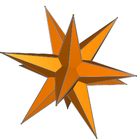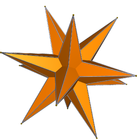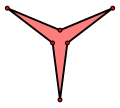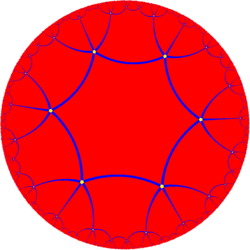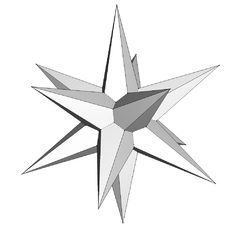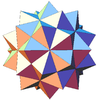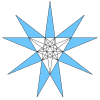|
Great triambic icosahedron
 In geometry, the great triambic icosahedron and medial triambic icosahedron (or midly triambic icosahedron) are visually identical dual uniform polyhedra. The exterior surface also represents the De2f2 stellation of the icosahedron. These figures can be differentiated by marking which intersections between edges are true vertices and which are not. In the above images, true vertices are marked by gold spheres, which can be seen in the concave Y-shaped areas. Alternatively, if the faces are filled with the even–odd rule, the internal structure of both shapes will differ. The 12 vertices of the convex hull matches the vertex arrangement of an icosahedron. Great triambic icosahedronThe great triambic icosahedron is the dual of the great ditrigonal icosidodecahedron, U47. It has 20 inverted-hexagonal (triambus) faces, shaped like a three-bladed propeller. It has 32 vertices: 12 exterior points, and 20 hidden inside. It has 60 edges. The faces have alternating angles of and . The sum of the six angles is , and not as might be expected for a hexagon, because the polygon turns around its center twice. The dihedral angle equals . Medial triambic icosahedronThe medial triambic icosahedron is the dual of the ditrigonal dodecadodecahedron, U41. It has 20 faces, each being simple concave isotoxal hexagons or triambi. It has 24 vertices: 12 exterior points, and 12 hidden inside. It has 60 edges. The faces have alternating angles of and . The dihedral angle equals .
As a stellationIt is Wenninger's 34th model as his 9th stellation of the icosahedron See alsoReferences
External links
Information related to Great triambic icosahedron |
||||||||||||||||||||||||||||||||||||||||||||||||||||||||||||||||||||||||||||||||||||||||||||||||
